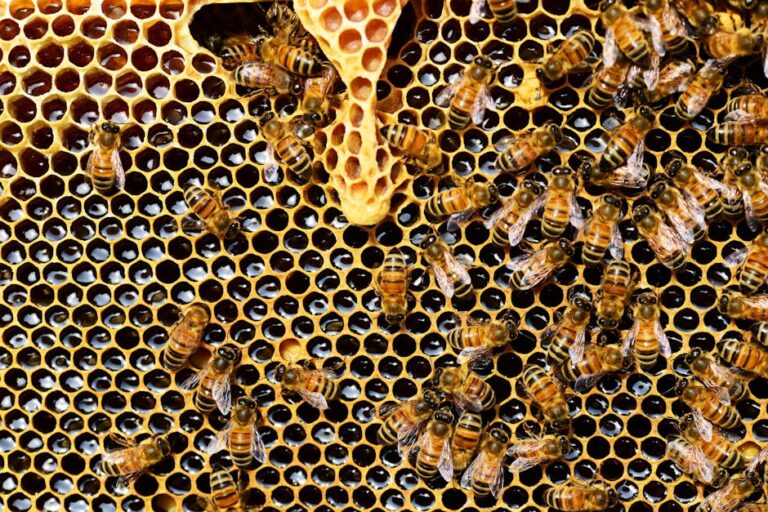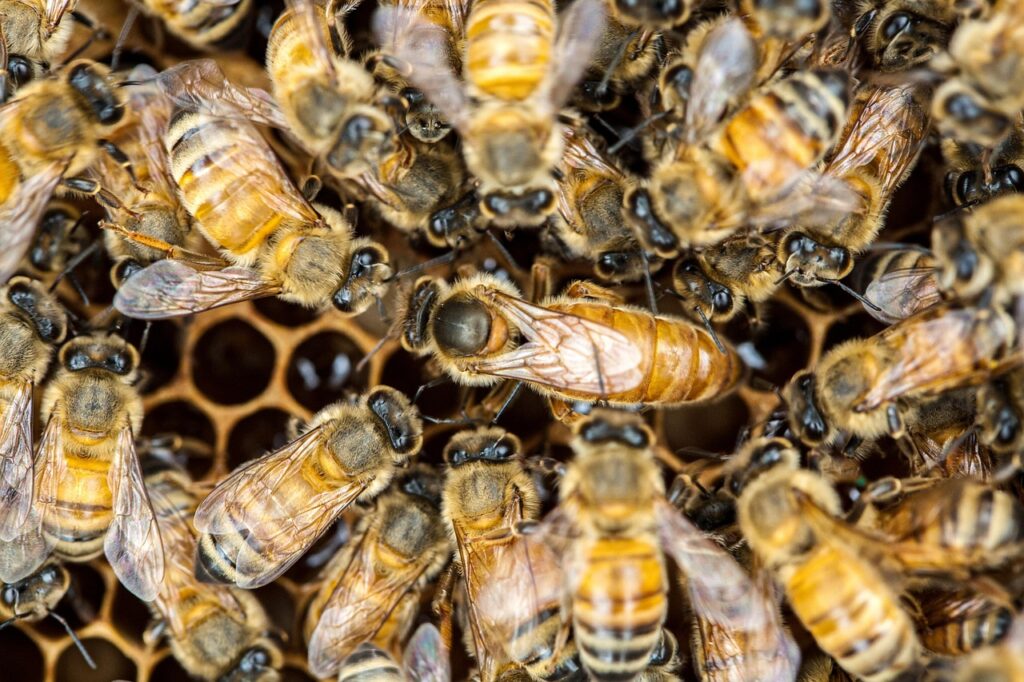Here’s how do bees build honeycomb
Bees build honeycomb by producing wax from glands on the underside of their abdomens, chewing it to soften it, and then shaping it into the iconic hexagonal cells that form the comb[1][2].
This process is a collective effort of many worker bees and involves several precise steps for both efficiency and strength.
Key steps in honeycomb construction:
• Wax Production:
Young worker bees consume honey, which is metabolized into wax.
The wax is secreted as tiny flakes or scales from eight wax glands located on the underside of their abdomen[1][2].
• Processing the Wax:
Bees gather these wax flakes with their legs, pass them to their mandibles, and chew them to soften and mold the wax into workable material[1][2].
• Building the Comb:
Bees form chains, a behavior known as ‘festooning,’ to create a scaffold, which allows them to start constructing the comb from the top of their chosen cavity and expanding both downward and laterally[3].
• Cell Formation:
Bees initially form rough circular or cylindrical cells. By warming the wax and working in close quarters, the wax flows and the cylinders are pressed together, naturally forming uniform hexagonal cells due to the physics of minimized surface area and efficient packing[4][5][6].
• Self-Organization and Adaptation:
Bees work simultaneously from multiple points, eventually joining separate sections precisely.
Their collective behavior and local rule-following help maintain regularity even in irregular or curved spaces, resulting in honeycomb with consistent hexagonal patterns that maximize storage while minimizing wax usage[7][6].
Functions and Efficiency:
• Structural Use:
Honeycomb serves as the structure for the hive’s floors, walls, and ceilings. Hexagons provide optimal strength and storage with minimal material, supporting honey storage, brood rearing, and movement within the hive[1][3][5].
• Economy of Material:
Constructing 1 pound of wax requires bees to eat 6-8 pounds of honey, so the hexagonal shape is crucial for efficiency and strength[5][2].
• Adapting to Space:
In wild hives or non-uniform spaces, bees adapt their methods, occasionally producing non-regular shapes or merging sections, ensuring the comb remains functional and robust[7][6].
The overall building process is a remarkable blend of biological programming, physics, and collective behavior, resulting in one of nature’s most efficient and recognizable structures[1][6][2].
⁂
1. https://www.reddit.com/r/askscience/comments/3eefjn/how_do_all_bees_innately_know_to_build_hexagonal/
2. https://www.science.org/content/article/clever-carpentry-helps-bees-fix-wild-honeycombs
3. https://bestbees.com/honeycomb/
4. https://consensus.app/questions/bees-make-honeycomb/
5. https://www.tiktok.com/@bowserbee/video/7204515074742979882?lang=en
6. https://www.beekeepingmadesimple.com/blog/how-bees-make-honeycomb
7. https://freshhoneycomb.com/blogs/the-buzz/how-do-bees-make-honeycomb



